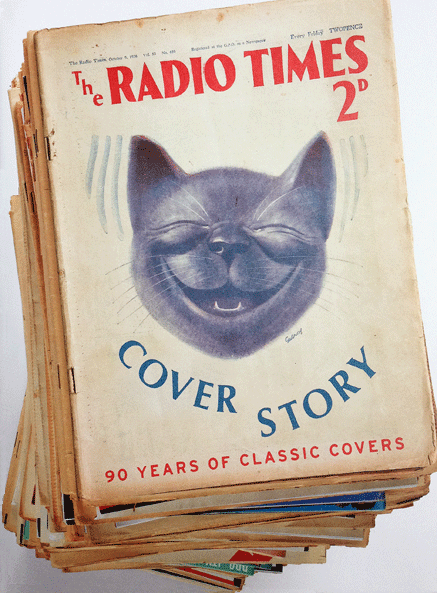 There aren’t many magazine brands that can publish a hardback book of their covers alone. Rolling Stone, Esquire and Vogue have done it, now the Radio Times joins this elite club.
There aren’t many magazine brands that can publish a hardback book of their covers alone. Rolling Stone, Esquire and Vogue have done it, now the Radio Times joins this elite club.
Arguably the biggest magazine in the UK, Radio Times has occupied two very different positions in the publishing landscape. Firstly as a monopoly publication of the BBC, and then as a regular commercial offering, competing with all the other listings titles. Radio Times is currently celebrating its 90th anniversary, this book show what an incredible role the title has played in documenting British cultural life,
Unlike the titles mentioned earlier, Radio Times is a weekly, so it’s not possible to put every cover in the book. Skillfully curated by their longstanding Art Director and Deputy Editor, Shem Law, the book has all the famous ones, together with a whole load more that surprise, delight, and frankly make you feel just a little bit emotional.
It’s not available in the shops, but you can buy it online in the Radio Times shop. At only twenty-odd quid, it’s got ‘Christmas present’ written pretty much all over it!
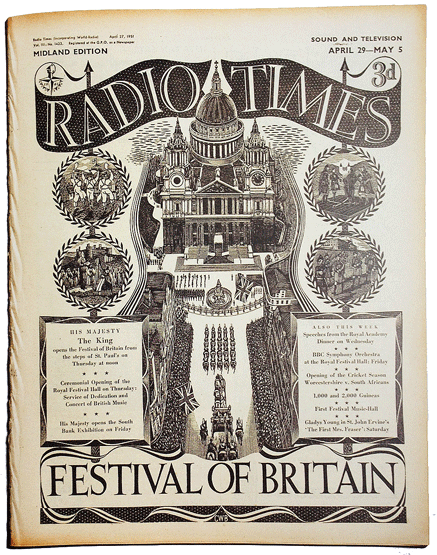 There are way too many amazing covers to show on my blog, so here is just a tiny selection. This cover is from 1951, with what appears to be a one-off logo specially for the Festival.
There are way too many amazing covers to show on my blog, so here is just a tiny selection. This cover is from 1951, with what appears to be a one-off logo specially for the Festival.
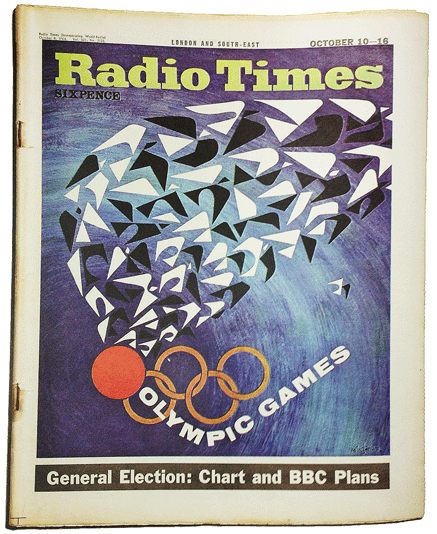 For the 1964 Winter Olympics, an Escher inspired illustration from Victor Reinganum. A groovy new sixties logo too.
For the 1964 Winter Olympics, an Escher inspired illustration from Victor Reinganum. A groovy new sixties logo too.
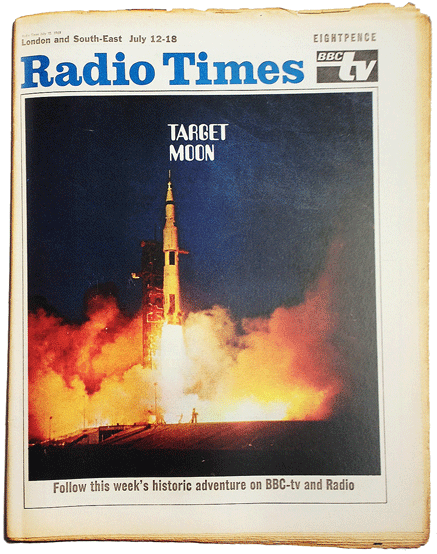 Another from the sixties, this time the moon landings in 1969.
Another from the sixties, this time the moon landings in 1969.
 Six months later, Morcambe and Wise usher in the 70’s, with this New Year issue. A measure of the power of this image is that not only can we not see their faces, but Radio Times are confident enough to leave their names off too, referring to them only as ‘The lads’. This cover also presents the logo that for many people, is still the Original & Best.
Six months later, Morcambe and Wise usher in the 70’s, with this New Year issue. A measure of the power of this image is that not only can we not see their faces, but Radio Times are confident enough to leave their names off too, referring to them only as ‘The lads’. This cover also presents the logo that for many people, is still the Original & Best.
 An indication of the level of effort put into all these covers, is this amazing cover from 1977. Not an illustration, it’s a real tapestry, made by Candace Bahouth and commissioned by then art editor David Driver.
An indication of the level of effort put into all these covers, is this amazing cover from 1977. Not an illustration, it’s a real tapestry, made by Candace Bahouth and commissioned by then art editor David Driver.
 The nineties saw the listings market become de-regulated, which meant Radio Times now faced real competition on the newsstand, notably from TV Times. The logo has been given a whole load of extra muscle, and celebrity covers are now the order of the day. This is Sue Dando from 1999.
The nineties saw the listings market become de-regulated, which meant Radio Times now faced real competition on the newsstand, notably from TV Times. The logo has been given a whole load of extra muscle, and celebrity covers are now the order of the day. This is Sue Dando from 1999.
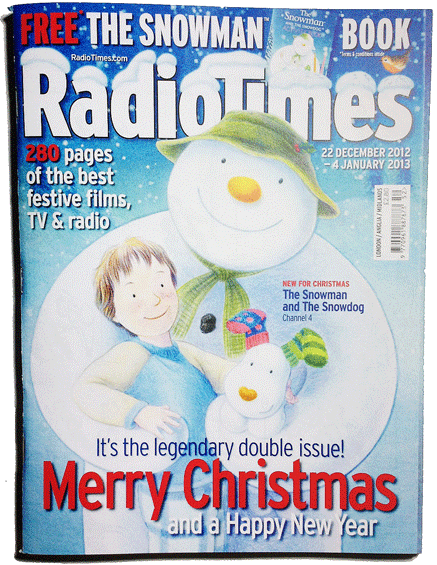 The new millenium saw the logo change again, this time to the current position as shown by last years excellent Christmas cover.
The new millenium saw the logo change again, this time to the current position as shown by last years excellent Christmas cover.
In the digital age it seems impossible that anyone could ever want to buy a paper listings magazine, but buy they do, by the million.
Between 2004 and 2013 I’ve had extensive and continuous involvement in all of IPC’s TV listings portfolio: TV Times, What’s On TV, TV Easy and TV & Satellite Week.
My view as to why these things still work is that compared to digital alternatives not only is the habit more deeply ingrained, but importantly, the listings are just easier and simpler to use than an epg.
And crucially, the sociability is more universal. By that, I mean the whole family, from Granny down to the kids, can easily use and pass round a printed magazine.
In short, they connect the reader to a shared experience of being At Home.
For those interested in a deeper enquiry to covers in the listings market, take a look at my earlier post on coverthink. Here, I look at the differences between Radio Times and TV Times, specifically the challenges of using six images on a cover as opposed to just one.